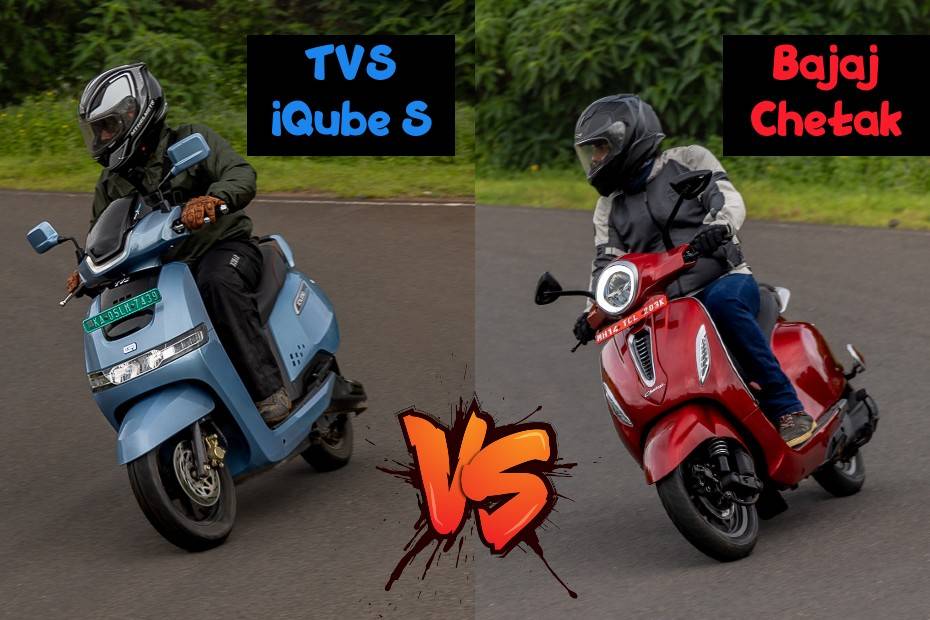TVS iQube Electric S vs Bajaj Chetak: Real-world Range, Performance Numbers Compared
Modified On October 20, 2022 12:21 IST
By Aamir Momin for Bajaj Chetak [2020 - 2024]
- 2006 Views
Both e-scooters go head to head in terms of real-world performance

We have ridden the TVS iQube Electric S and Bajaj Chetak thoroughly and put them to tests in terms of the real-world performance. While both e-scooters are pretty attractive products in the EV segment, how do they fare against each other in terms of real-world performance? We explain.
|
Acceleration In Power Mode |
Chetak |
TVS iQube S |
|
0-40kmph |
4.46s |
4.44s |
|
0-60kmph |
10.04s |
8.41s |
|
20-50kmph (kickdown) |
5.20s |
4.39s |

As you can see from the table above, the time taken to do the 0-40kmph is almost the same on both e-scooters. However, the 0-60kmph takes rather longer on the Chetak. This could be because of its slightly heavier kerb weight of 132kg, compared to the 128kg of the iQube.

Unlike its rivals, the Chetak increases the speed gradually rather than in a surge, resulting in a slightly slower roll-on acceleration. This could also be the result of the 19Nm produced by the Chetak, as opposed to iQube’s 33Nm.
- Check Out Bajaj Chetak Price in India
- Check Out TVS iQube Electric Price in India
- Ola S1 Pro Electric Scooter’s Front Suspension Breaks Again
|
Range |
Chetak |
2022 TVS iQube S |
|
Tested Range |
113.89km |
114.76km |
|
Claimed Range |
90km |
100km |

Both e-scooters have managed to impress us by surpassing their claimed range, but more so, the Chetak, because it clocked 23.89km more than its claimed range. One of the reasons could be the very effective regen technology on both scooters which just pushes back the juice to the system once you let go of the throttle.
|
Braking |
Chetak |
2022 TVS iQube S |
|
60-0kmph |
23.38m |
19.72m |

In terms of braking power, the iQube S bags the win with a distinctly shorter braking distance. Despite not being equipped with ABS, the iQube S’s stopping power is good with adequate feedback on the levers. That said, the Chetak’s braking was rather disappointing and felt almost spongy after 500km of testing. One of the reasons for this would be that the Chetak gets an all-metal body and has a heavier kerb weight.

So finally what it boils down to is which one of these is a more value-for-money product. And all things considered – features, performance, ride and handling, and the price – the TVS iQube comes out on top.
Head here to find out what we think about the TVS iQube S in our road test review, and you can also check out what we liked and disliked about the Chetak here.
